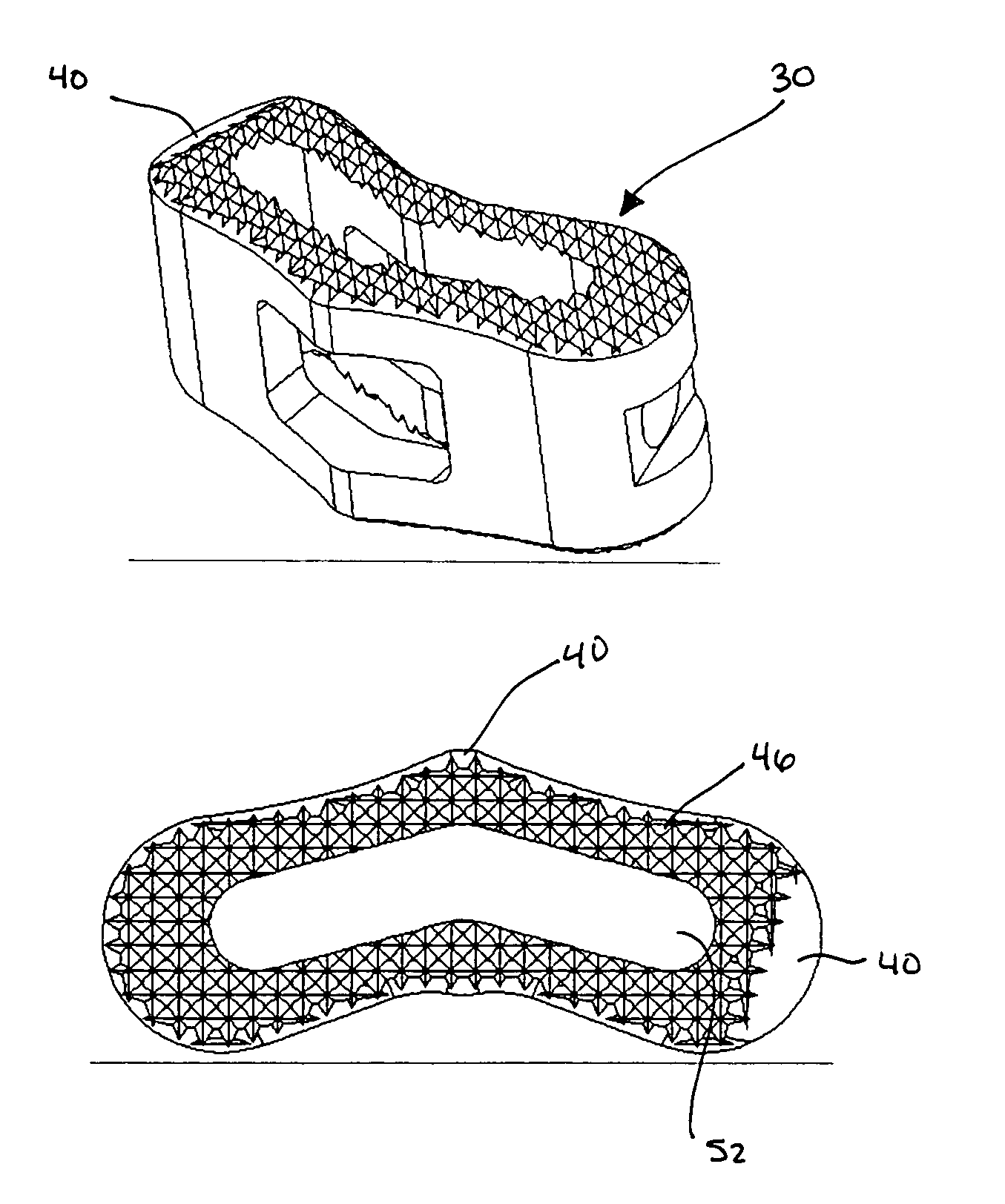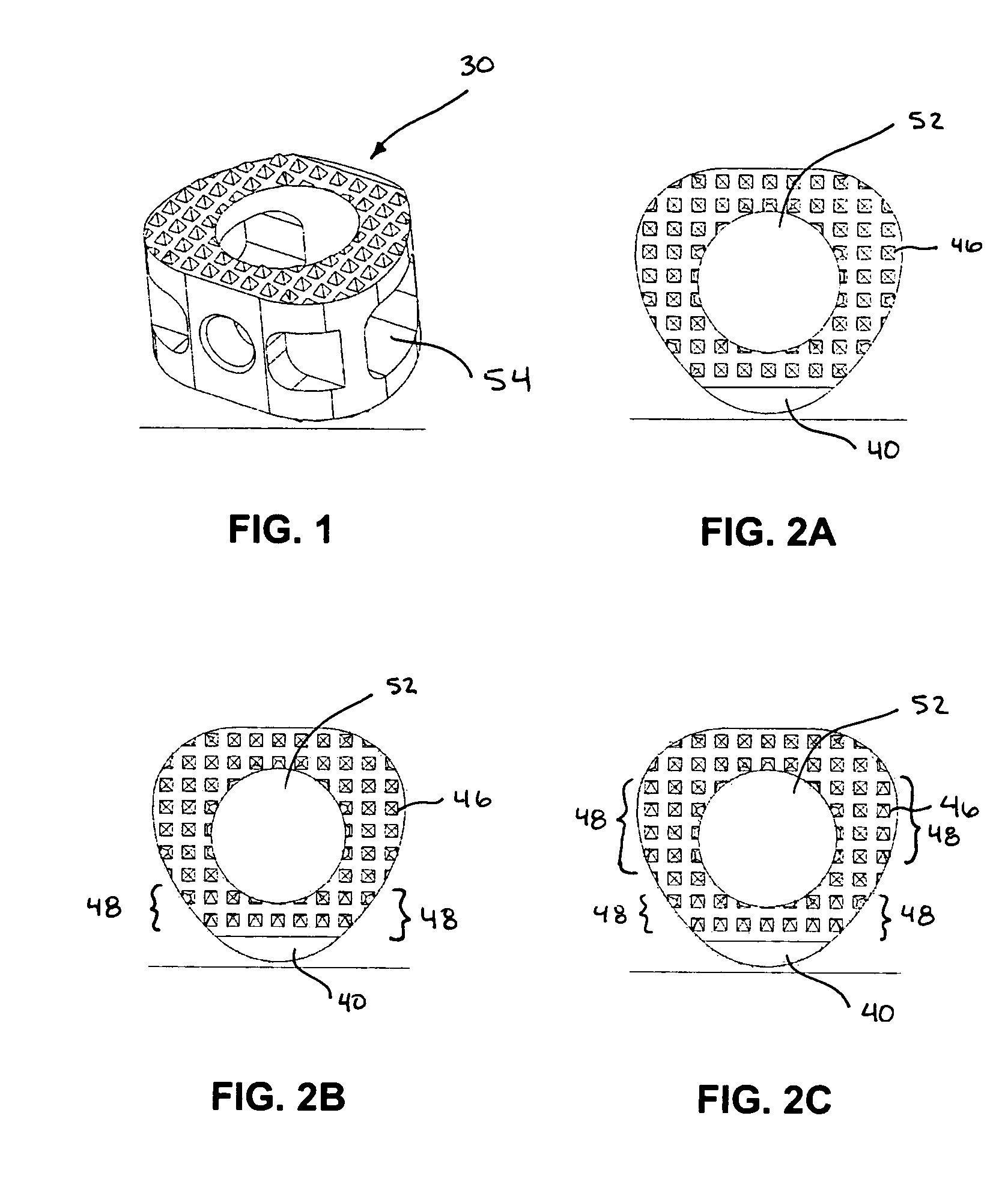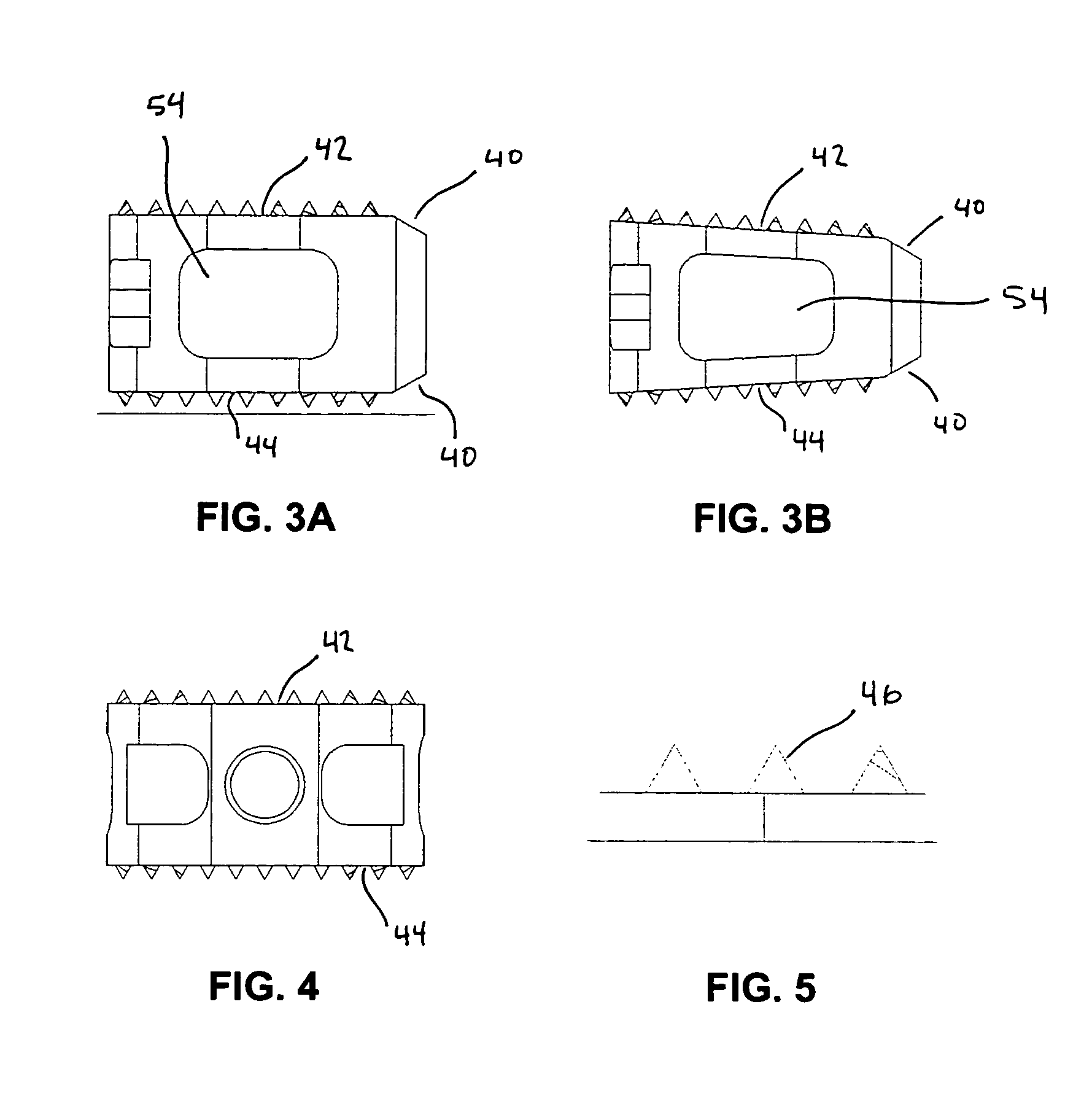Spinal fusion implant
a technology of spinal fusion and implant, which is applied in the field of spinal fusion implants, can solve the problems of disc or vertebral body displacement, chronic back pain, and disc or vertebral body damage,
- Summary
- Abstract
- Description
- Claims
- Application Information
AI Technical Summary
Benefits of technology
Problems solved by technology
Method used
Image
Examples
Embodiment Construction
[0035]The present invention relates generally to implantable spacers 30 that can be used to fuse together a treated area of the spine while restoring or maintaining the proper spacing and natural curvature of the spine. The treated area may include regions between adjacent vertebral bodies so that the height of the spacer corresponds approximately to the height of the disc. More preferably, however, the height of the spacer of the present invention is greater than the height of a disc alone. For instance, the treated area of the spine may be prepared by the physician by removing all or part of at least one vertebral body.
[0036]As explained in greater detail below, several features of the invention allow for more efficient insertion or placement of the spacers into a desired position. Additionally, the present invention also provides suitable rigidity and integrity for supporting the spine during fusion while also providing greater ability to confirm that fusion is taking place as de...
PUM
| Property | Measurement | Unit |
|---|---|---|
| contact area | aaaaa | aaaaa |
| contact area | aaaaa | aaaaa |
| contact area | aaaaa | aaaaa |
Abstract
Description
Claims
Application Information
 Login to View More
Login to View More - R&D
- Intellectual Property
- Life Sciences
- Materials
- Tech Scout
- Unparalleled Data Quality
- Higher Quality Content
- 60% Fewer Hallucinations
Browse by: Latest US Patents, China's latest patents, Technical Efficacy Thesaurus, Application Domain, Technology Topic, Popular Technical Reports.
© 2025 PatSnap. All rights reserved.Legal|Privacy policy|Modern Slavery Act Transparency Statement|Sitemap|About US| Contact US: help@patsnap.com



